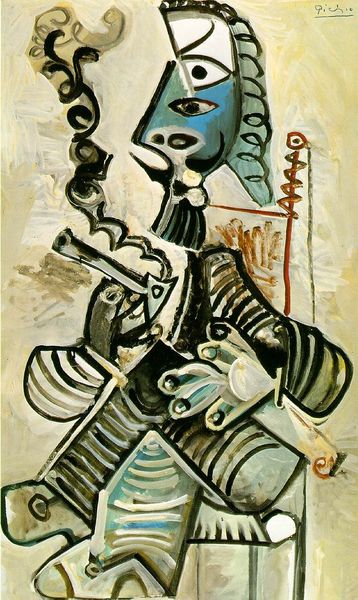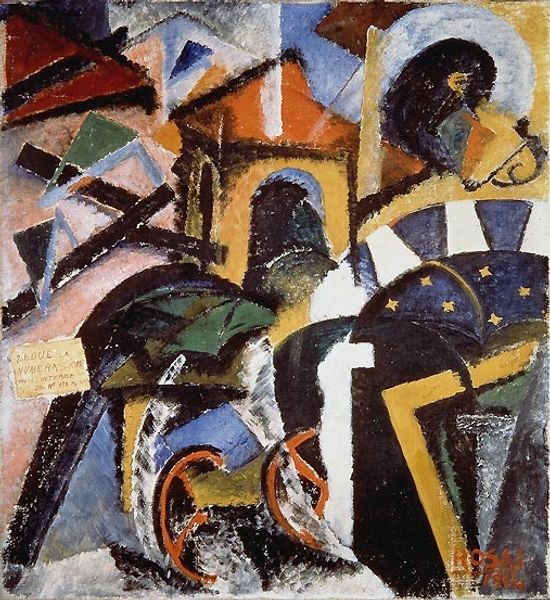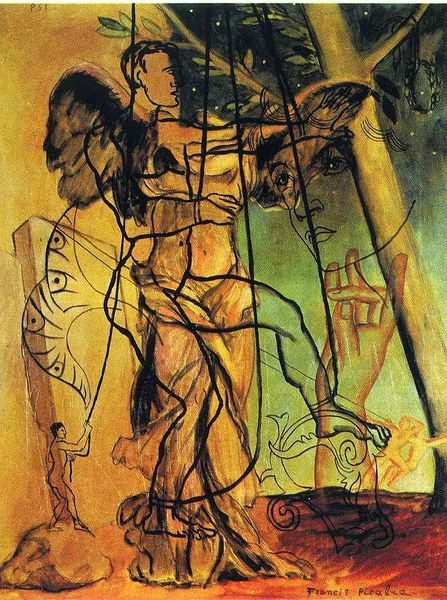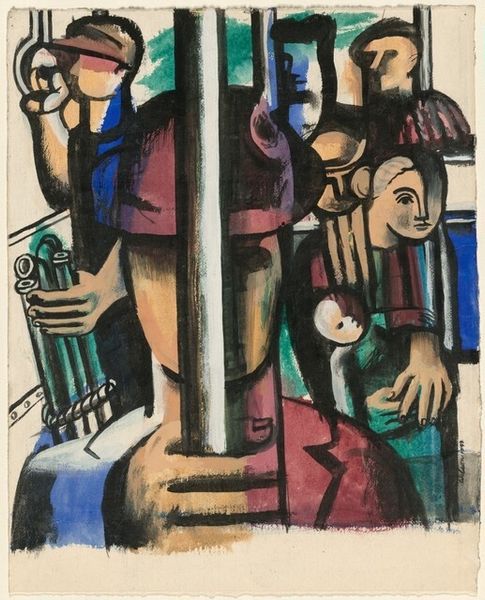
Dimensions: 101 x 68 cm
Copyright: Public domain
Editor: Here we have Max Beckmann's "Odysseus And The Siren," painted in 1933 using watercolor. There's a stark rawness to it, especially in the figures' faces, like masks hiding something turbulent. How do you interpret this work, especially considering its historical context? Curator: Given the rise of fascism in 1933, I see this painting as a commentary on power, seduction, and the suppression of the self. Odysseus, often read as a symbol of Western individualism, is here almost robotic, shielded. Do you think his apparent blindness, emphasized by that dark helmet, points to a complicity, a refusal to acknowledge the danger of the siren’s song? Editor: That's interesting! I was so focused on the siren's allure, but your point about Odysseus potentially choosing ignorance resonates. What about the racialized depiction of the siren herself? Curator: Indeed, that's a crucial point. Beckmann, like many artists of his time, engaged with Primitivism. The siren's darker skin and exaggerated features reflect anxieties about the "other," anxieties often intertwined with colonial power dynamics and exoticism. It forces us to confront how myths can be twisted to perpetuate racial stereotypes. Do you think Beckmann is endorsing these stereotypes or critiquing the cultural forces that create them? Editor: I think it's ambiguous, and that ambiguity makes the painting so unsettling. He’s not offering easy answers, but rather forcing us to ask difficult questions about power, desire, and representation. Curator: Exactly. This work embodies the modernist struggle with myth-making and representation, urging us to critically examine the narratives we inherit and their potential to reinforce oppressive structures. The act of engaging with this kind of historically loaded and highly problematic imagery can invite a re-examination of current issues regarding power, identity, and historical truth. Editor: Thank you; I learned that even supposedly classical narratives are shaped by the sociopolitical context in which they are told. It is all there if one engages critically. Curator: And hopefully that engagement encourages change.
Comments
No comments
Be the first to comment and join the conversation on the ultimate creative platform.













